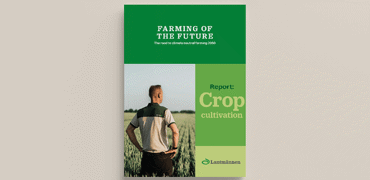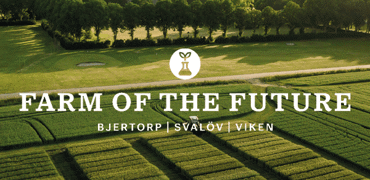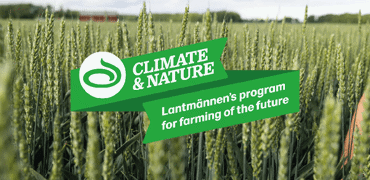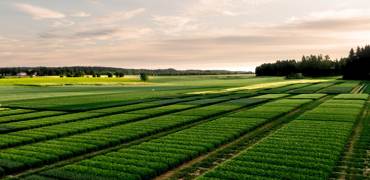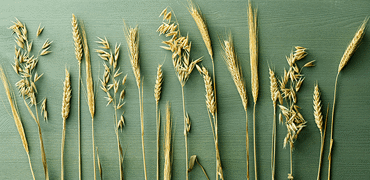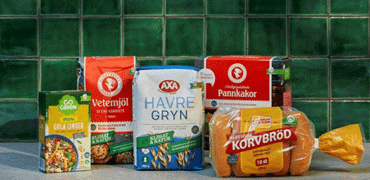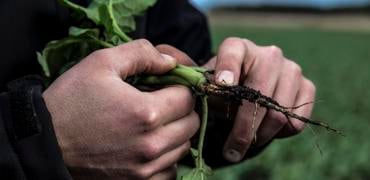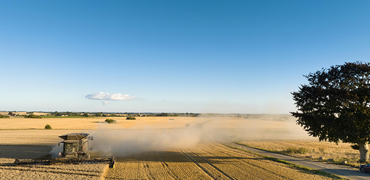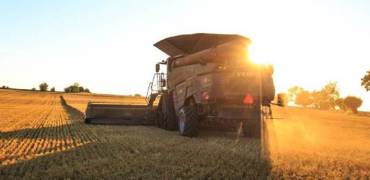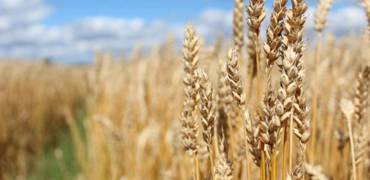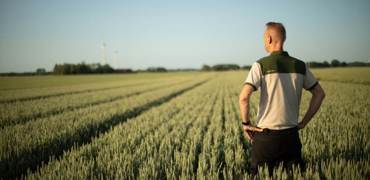Lantmännen's preliminary summary indicates that the Swedish grain harvest will amount to around 4.4-4.5 million tonnes, a figure just over one million tonnes lower than a normal year. The dry weather in early summer had a negative impact on the crops. The prolonged and extensive rainfall that followed from July to September has since further aggravated the situation and had a very negative impact on the quality of the cereals. In some regions, up to 80% of the cereals will be used as feed because the quality does not meet the requirements to be classified as food. These include wheat that is not suitable for flour production, too high protein content and sprouted grains in malting barley, as well as widespread problems with green shoots in several crops. However, there are major regional differences and variation between cereals.
"The 2023 harvest is one of the worst harvests we have seen in the last 30 years. We have had harvests with low yields and harvests with quality problems before. Now both have occurred at the same time, and this has a very negative impact on supply," says Per Germundsson, Head of Grain Sourcing and Sales at Lantmännen's Grain Unit.
After this year's poor harvest, many Swedish farmers, who have dealt with cost increases on inputs, will become subject to an increasingly tough economic situation. At present, about 90 percent of the harvest is collected, but the weather has forced many farmers to extend the harvest period. In addition, precipitation in some parts of the country has been so extensive that several fields cannot be harvested at all. Due to the harvest outcome, the need to import milling wheat is becoming increasingly likely.
"The supply of Swedish milling wheat from this year's harvest is even lower than after the extensive drought in 2018. It is too early to say whether Sweden, which is normally a net exporter of cereals, will import milling wheat this year. Nonetheless, we can be sure to say that the mills will be having to work with more expensive inputs than they would have had to under better conditions, Per Germundsson explains.
Swedish preparedness requires accelerated climate adaptation
One of Lantmännen's entries to Sweden's Food Strategy 2.0 is A strengthened agenda for climate adaptation to secure Swedish food production as well as a viable agriculture sector. This year's harvest underlines the importance of intensifying the efforts to manage fluctuating weather conditions and to respond to climate change – including significant investments in plant breeding and efficient irrigation and drainage systems. The latest industry estimates shows that the investments required in the area of irrigation and drainage alone, amounts to around SEK 50 billion.
"In order to ensure increased Swedish grain and food production, major infrastructural investments in climate adaptation are needed. This is a cost that the agriculture sector will not be able to bear alone. The primary production, industry and politicians have a shared responsibility to ensure this – it is ultimately about creating conditions for Swedish agriculture, Swedish food production and about strengthening Swedish preparedness," concludes Magnus Kagevik, Group President and CEO, Lantmännen.
For more information, please contact:
Lantmännen’s Press Service
Phone: +46 10 556 88 00
E-mail: press@lantmannen.com






